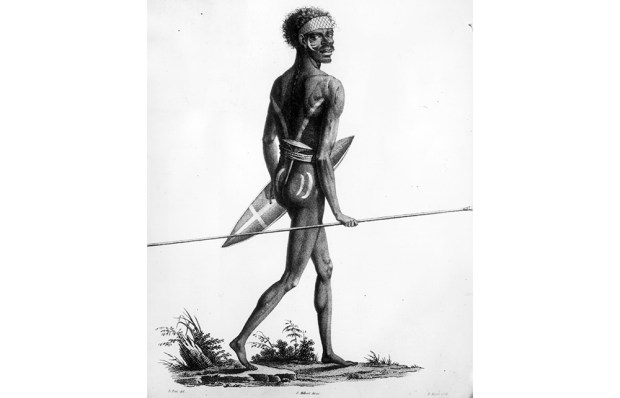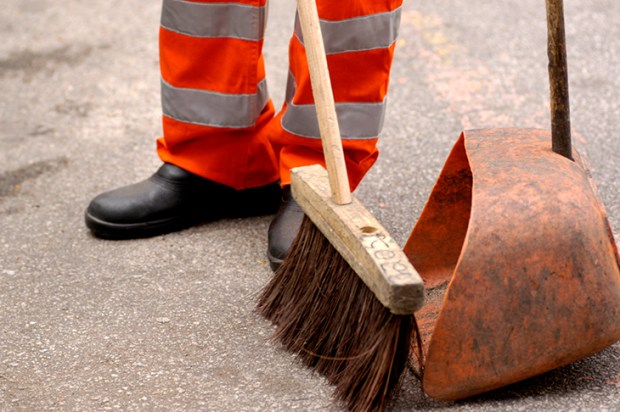It has become the standard practice of Australian property developers to decorate the hoardings around inner-city construction sites with photographs and engravings of the same streetscape 50, 100 and even 150 years ago. This is presumably done to mitigate the temporary disfigurement of a public space or thoroughfare, but all too often it reminds us that the buildings being put up are aesthetically inferior to the ones which have been knocked down. A bigger worry, for both the developer funding the project and the council which approved it, are the potential political pitfalls of this well-intentioned protocol. Even the oldest photographs and engravings, after all, can only speak to a site’s colonial heritage, and fail conspicuously to acknowledge the 60,000-year culture which, as we are now so often reminded, preceded it. One option for councils would be to mandate that these hoardings should also showcase old artwork created by the land’s traditional owners. Unfortunately, the vast majority of our 200-plus First Nations didn’t start making pictorial art until an international market for it emerged towards the end of the last century. And since then, the work of Aboriginal artists who have excelled in the figurative landscape tradition, such as the late, great Albert Namatjira, has increasingly been marginalised as a species of uncle tommery. The archives of our galleries and libraries hold many images created by early white settlers of the contemporaneous indigenous population in situ, of course. But displaying such drawings and daguerreotypes today would be a breach of the taboo forbidding the publication of likenesses of Aboriginal people who have died. So unless construction companies are prepared to adopt the homogenising ‘one-look-fits-all’ approach to Australia’s huge indigenous diversity taken first by Qantas, in the dotting of its planes, and more recently by Rugby Australia, in the detailing of its jerseys, they must content themselves with increasing the prominence of the Acknowledgement of Country signage which is already a hoarding mandatory. Or, more likely, city councils must start banning the deployment of any visual reminders of our paler patriarchal past.
If you compared a rush hour photograph of any Australian CBD in the 1950s with one taken at the same time in the same location this morning, the people in them would evince as many differences as the architecture. Whereas half the men in the older image would be carrying newspapers, briefcases and cigarettes, for example, most of their modern counterparts wouldn’t be carrying anything except a smartphone – and perhaps a recyclable cup of responsibly sourced coffee. Many of the 1950s men would also, of course, be wearing a broad-brimmed hat. The only urban males who do this today are politicians who don Akubras to garner rural votes, thespians of a certain age and lifestyle, and senior Aboriginal and Torres Strait Islander leaders, for whom the broad brimmed hat – often garnished with a feather or two – would seem to be no less a badge of community authority than the voluminous grey beard. Even clean-shaven, treaty-ambivalent Noel Pearson sometimes wears a hat – although it should be said that his has a narrow brim, and unlike some of his colleagues he tends to observe the RSL rule of not wearing it indoors. The ubiquity of the big hat in modern ATSI affairs is notable when you consider that, at least according to my research, headgear of any kind was unknown in indigenous communities prior to European settlement. Surprisingly, perhaps, First Nations’ melanoma mortality rates are only marginally lower than those of their fairer-skinned compatriots, but for most of their history, as far as we know, their main defence against the ravages of the Australian sun was to stand under a tree. So if you accept that in one critical respect that’s what hats are – small, portable trees – it’s understandable that Aboriginal leaders should have taken more enthusiastically to them than they took to British imports of less obvious benefit – like fences and Christianity and smallpox. But I’m getting out of my anthropological depth here. Bruce Pascoe, I have no doubt, would have a more illuminating opinion. To many Australians, Professor Pascoe’s magnificent beard alone puts the central thesis of his magnum opus – not to mention his claim to Aboriginal identity – beyond question. The subsequent publication of another book which shreds that thesis, and the revelation that Pascoe’s grandparents were all English, seem not to have diminished his public standing to any discernible degree. And the fact that he is never seen wearing a hat of any kind can surely only deepen his connection to the Australia of pre-European settlement, and bolster the credibility of all his claims.
Got something to add? Join the discussion and comment below.
You might disagree with half of it, but you’ll enjoy reading all of it. Try your first month for free, then just $2 a week for the remainder of your first year.














